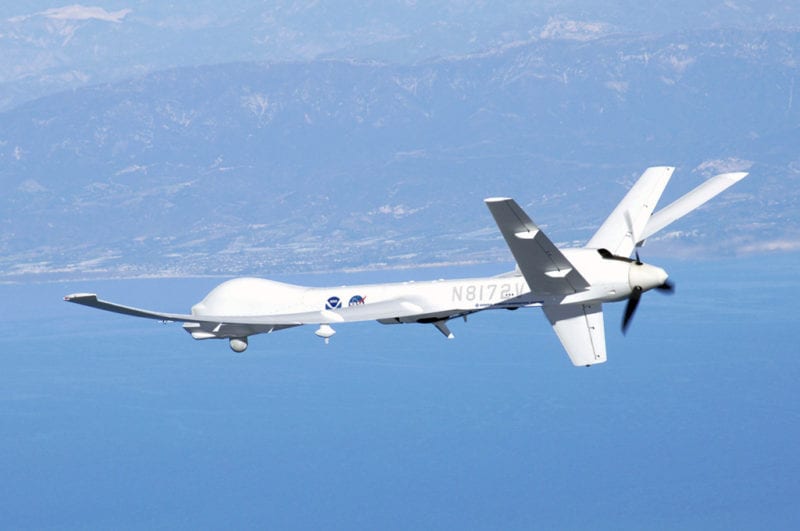Latest News

Sample UAV. Photo: Wikimedia Commons
Unmanned Aerial Vehicles (UAVs) or drones have seen a significant increase in applications across all segments — government as well as commercial. The use of UAVs is no longer a rarity, but fast becoming the norm for solving challenges such as search and rescue missions, intelligence, surveillance and reconnaissance, crop monitoring and harvesting, radiation mapping, infrastructure inspections, etc.
With the many different use cases and high demand, it is apparent that UAVs are solving real-life problems providing value to communities and operators. The most important factors to the UAVs success are the fact that they are unmanned, small, light-weight, easy to operate and not dependent on terrestrial infrastructures such as land-based access or terrestrial connectivity.
Although we have seen the first waves of UAVs being brought into commercialization, the full scale of satellite enabled UAVs is yet to be realized. Combining the restrictions of most UAVs’ physical appearance creates a plethora of limitations and challenges with regards to satellite-enabled connectivity. Inmarsat hosted a Pop-Up UAV Lab event earlier this year showcasing different applications applying satellite-based connectivity. However, none of the participants demonstrated working and reliable examples.
We know from other applications that satellite connectivity is difficult and requires special care during both specification, design and not least validation to secure good experiences. Antennas need to be pointing to the satellite all the time and the whole terminal consisting of antenna and modem takes up space, power, and weight. In the UAV case, connectivity must be maintained under all circumstances as there is no operator to intervene in case of lost connection. Hence, validation of stable and reliable connectivity under all circumstances is paramount to the success of Beyond Line of Sight UAV operations.
The many challenges to satellite enablement of UAVs make for a complicated road from proof of concept to final products. And with demands through the roof, companies might be tempted to launch products with less than the ideal amount of development and test hours behind it.
Test and validation of UAV applications are more than just acquiring an already type-approved and certified terminal and verify that it works in sunshine cases. It must be validated with varying latency when the connection is degraded by congestion or low signal-to-noise ratio when handing over the connection between satellite beams or satellites.
Depending on the type of UAV, huge amounts of data might be transmitted, e.g. high-resolution videos or pictures, so it is also important to perform data throughput validation of the application for stability under all circumstances.
The use of satellite data is expensive, so on top of securing that it works under all circumstances, it can be of value to optimize the application with regards to data consumption making it important to measure the actual data usage.
The recent growth in UAV applications demonstrates the commercial potential of drones. However, rushed development, leading to loss of connection, data or potentially the UAV itself, will be a huge setback for the UAV industry. That is why proper testing is crucial for the market’s future development.
 Svend Holme Sørensen is a product manager at GateHouse Telecom.
Svend Holme Sørensen is a product manager at GateHouse Telecom.
Get the latest Via Satellite news!
Subscribe Now